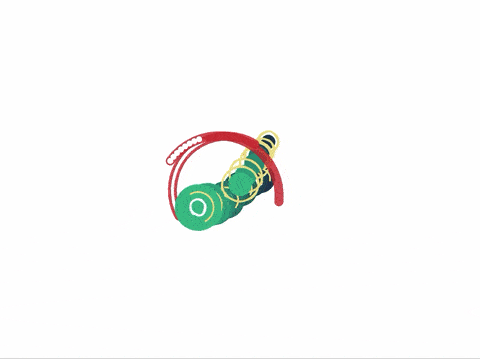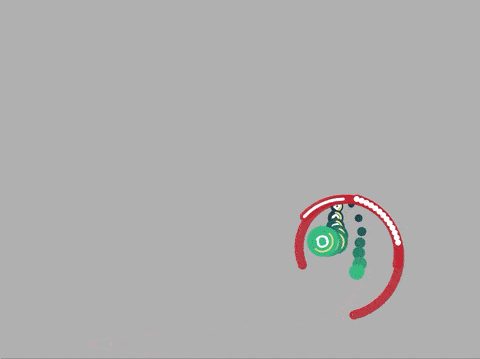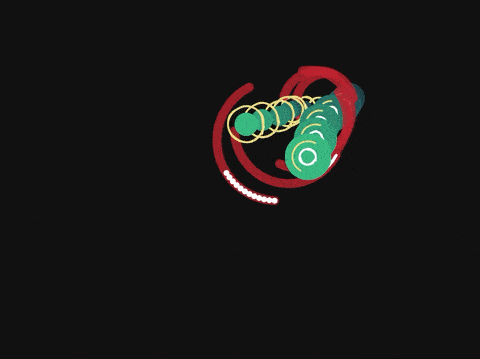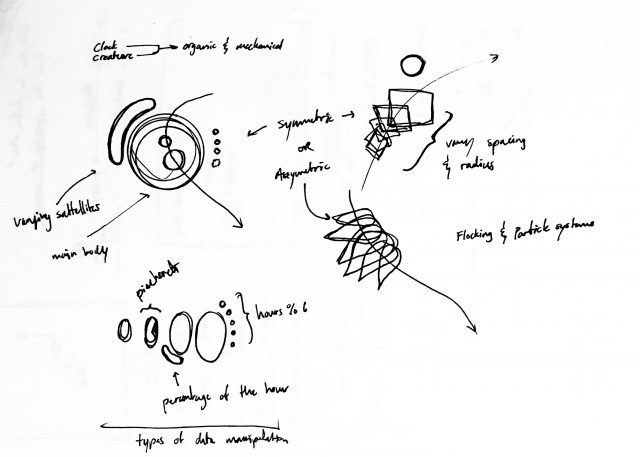I really liked this sentence from the reading “the experience of time is highly subjective, as if that of space, and thus the sense of a long moment, a swift day, a fast movie, a slow book requires elasticity in the way we measure, record, and express temporality”. I think it’s just a really beautiful the way time has been integrated into speech have almost descriptive qualities because of the emotions we associate with time(for example, a swift book = good read, a long day = bad day). I think it’s an interesting concept worth exploring.
Category: 03
axol-meadner
I am really surprised by how simple-ish algorithms can be used to simulate very organic, changing patterns. Also I am inspired how documenting change over time on a graph can generate really interesting results.
Also I thought it was super interesting that Voronoi Fracture was used to generate the irregular patterns in the land plot, and I want to know more about how he did it.
sweetcorn-Timekeeping
I was particularly drawn to the idea of time as sensation—as something we emotionally connect to rather than the typical conception of time which is very much focused on efficiency, labor, and productivity. I see an avenue of recuperating time and moving towards a time which reinforces community and rest and love <3
lampsauce-Clock
Creature Clock

Through my clock, I wanted to combine the mechanical mechanisms we use to measure time with organic and biological measures of time. I decided that my clock should be a creature that resembles ocean microorganisms. I intended for the clock to not be readable, rather I wanted to make a clock that would be mesmerizing to look at. However, it does count 15 seconds and has a sort of biological rhythm. CODE
EDIT NOTES: The newest version of this clock creature has debris in the background to situate the creature in an environment. Additionally, the framing of the "camera" zooms in and out throughout the hour. I also fixed several bugs I found with jarring discontinuities between certain time intervals.
Clock at Several Times*
*These GIFs are from version 2
Ideation
My major struggle with this work was creating an organic feel. My initial design (see v1) felt too mechanical and were not what I had envisioned. I eventually settled for the creature I currently have. I think that my goal for it to "evolve" over days, months, years may have been a bit too ambitious. Perhaps I could have played around with the creature's behavior more than I did. Version 3 | Version 2 | Version 1
Oodbird – clock
https://editor.p5js.org/arenouf/sketches/xqsfDmfB7
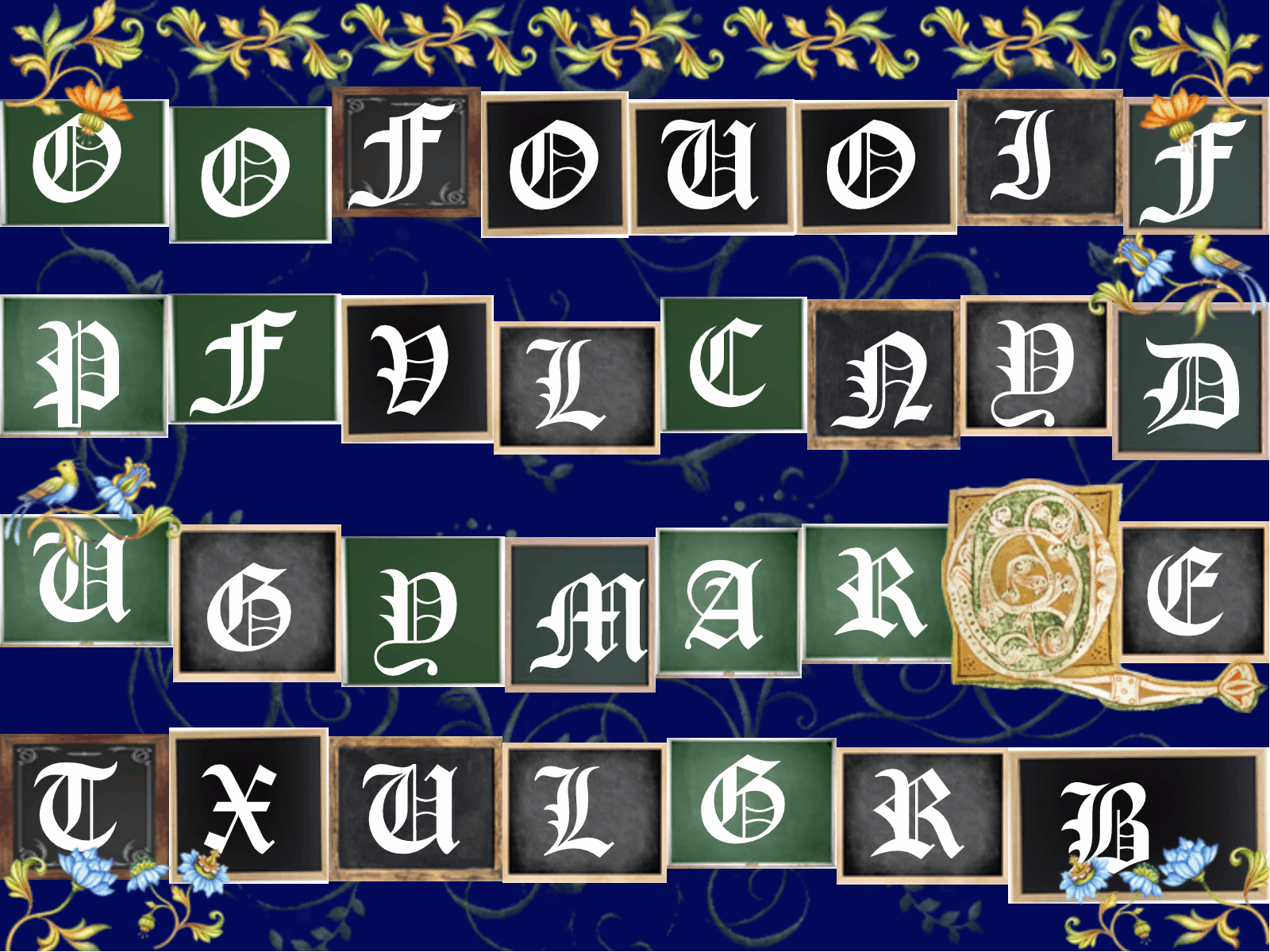


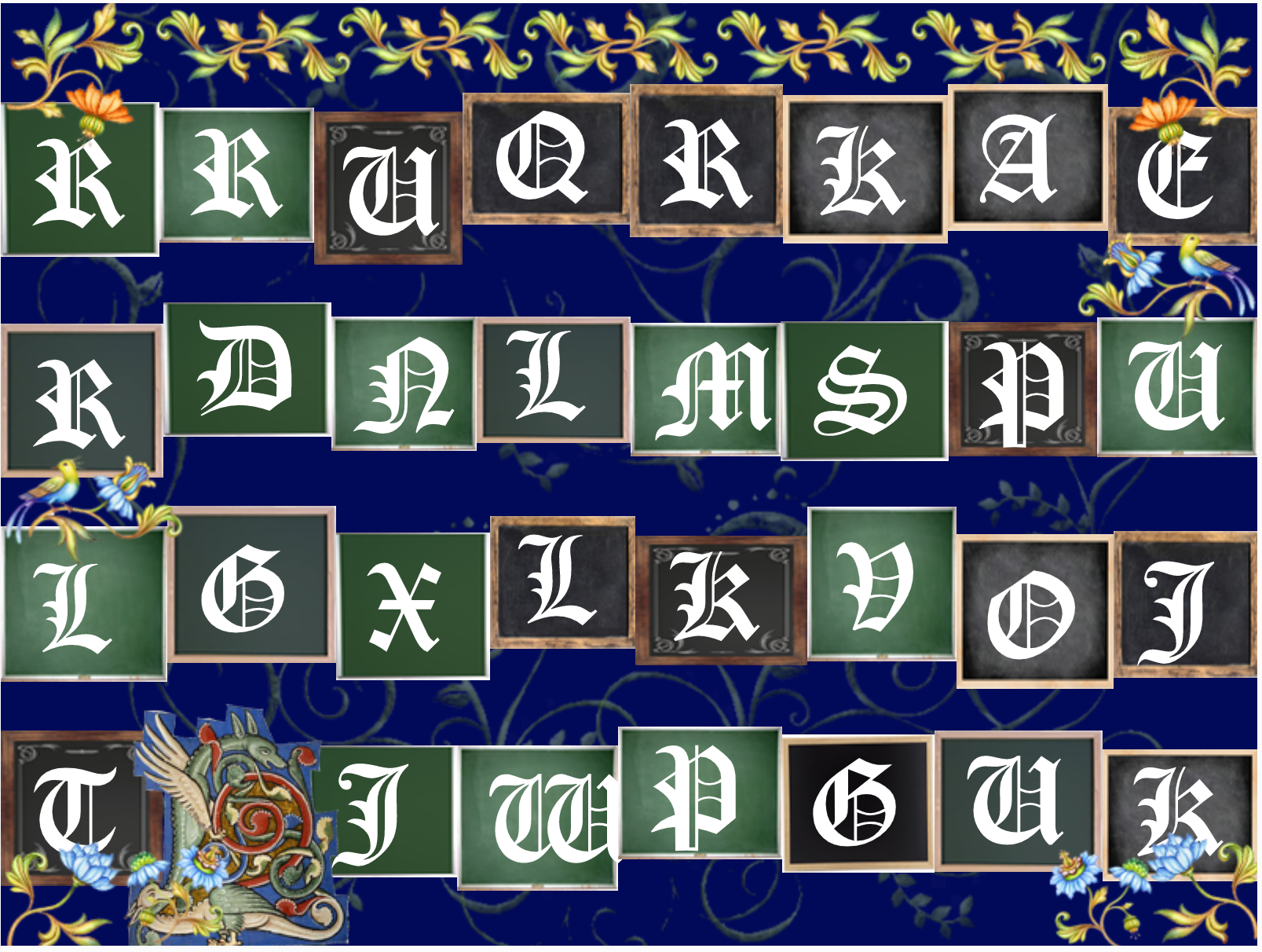
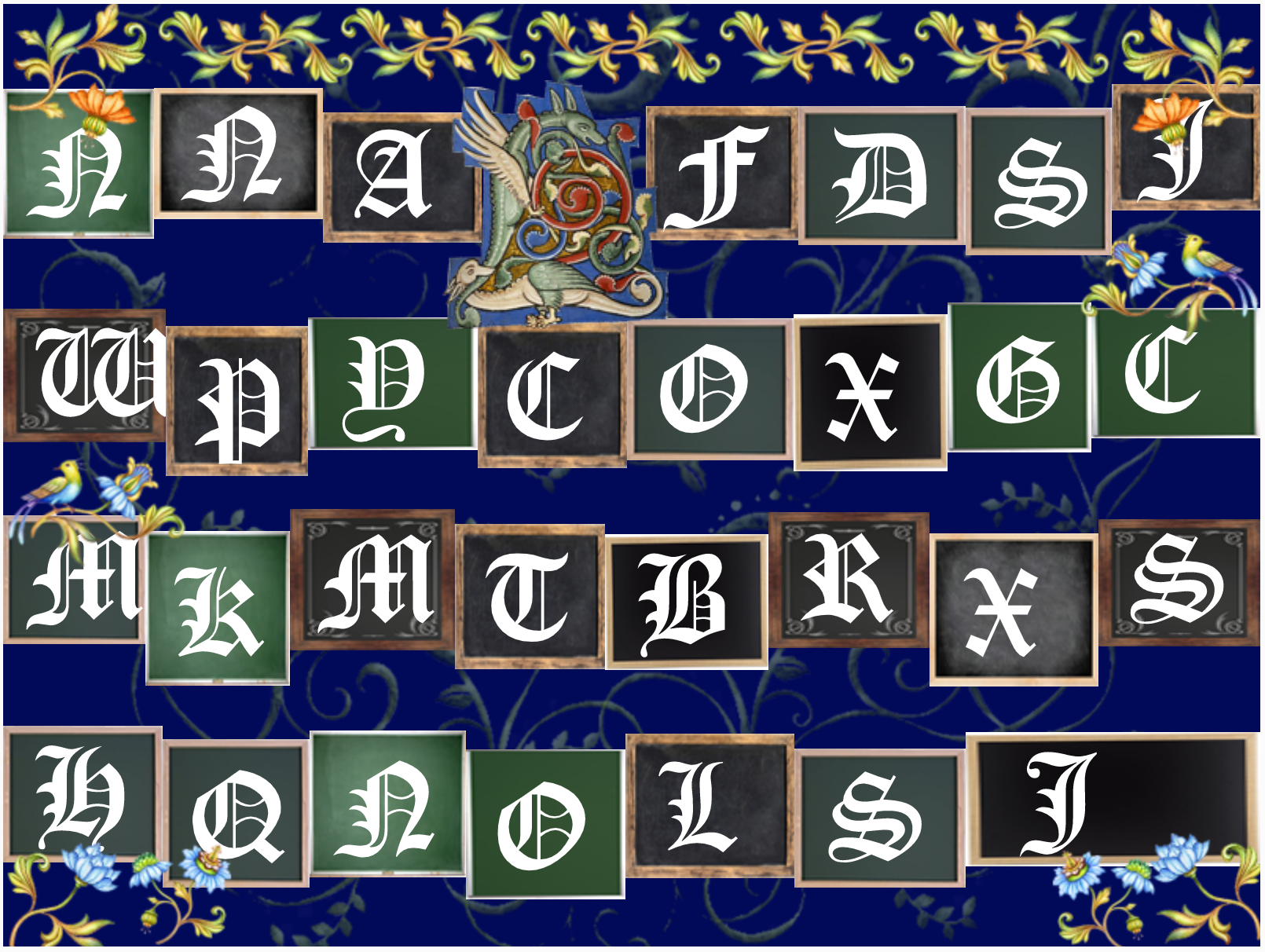
For this project I wanted to focus on the relationship between time and work, especially as it pertains to art and craftsmanship . A lot of how I measure time is based on how much work I have done or the speed at which I do work, especially given the unstructured nature of online classes.
One of the things I wanted to focus on was the human aspect of time, and i wanted to try to work against the mechanical and impersonal feeling of both clocks and computers. For this reason I became very interested in medieval text illustrations called illuminations. These illustrations feel extremely personal and when looking at a text featuring one of these, the amount of time put into them is very apparent.
sketches and planning:
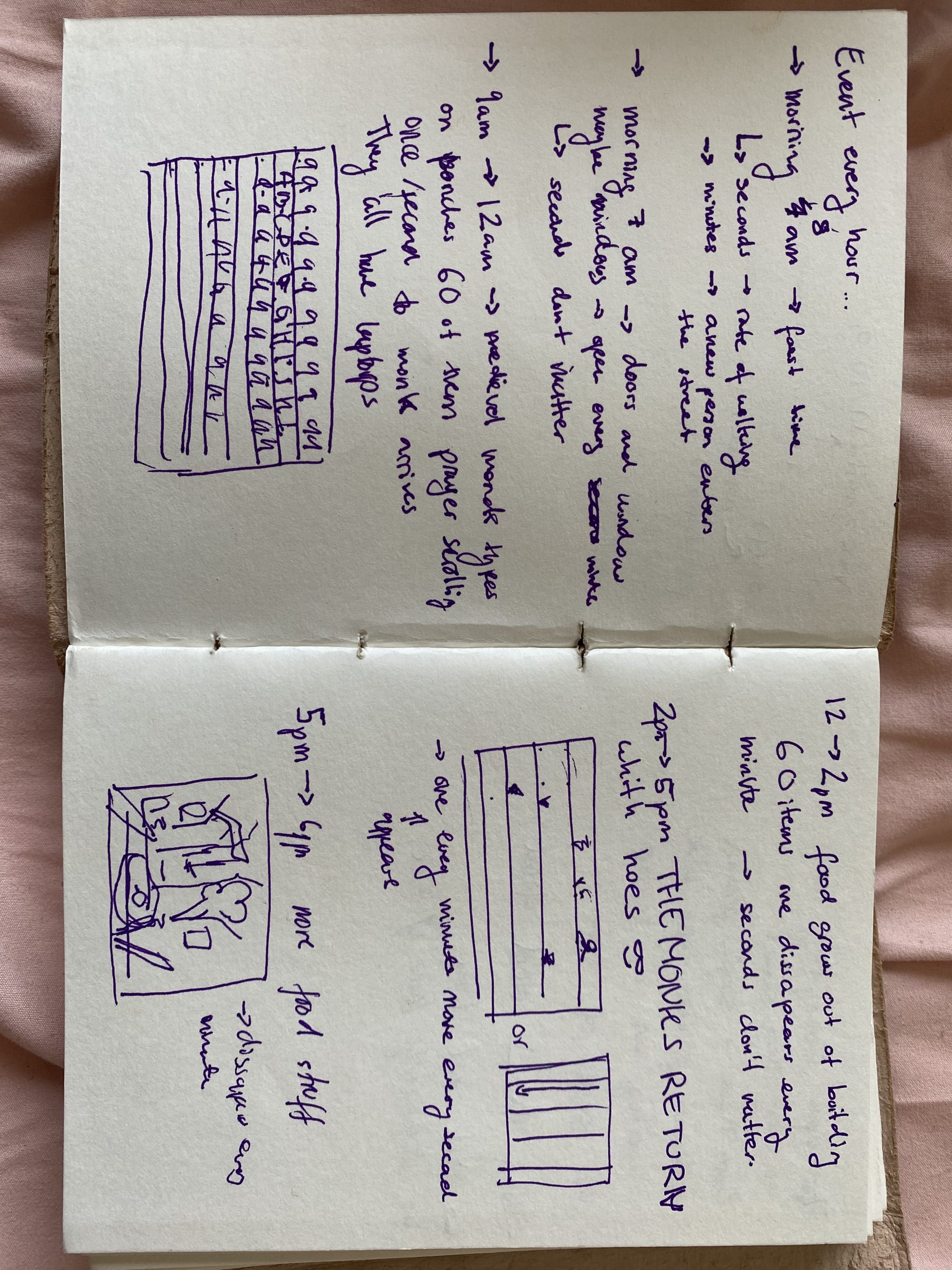
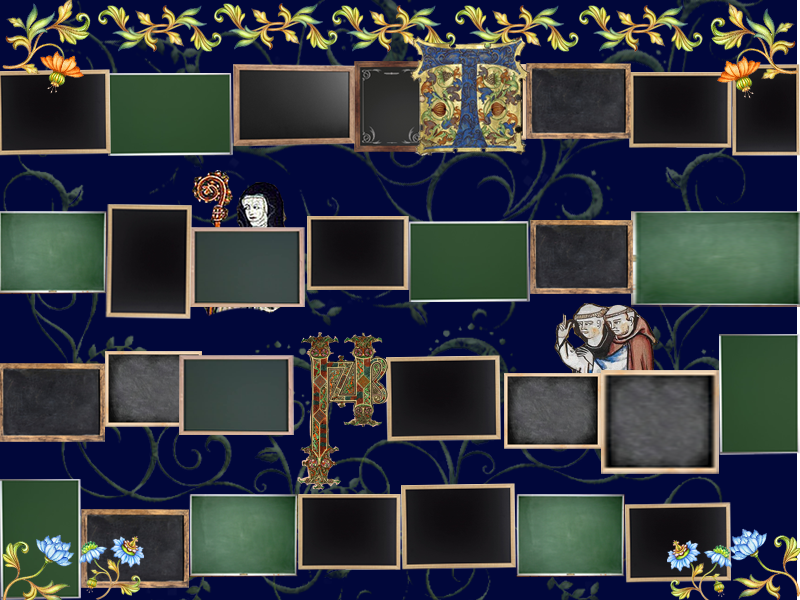
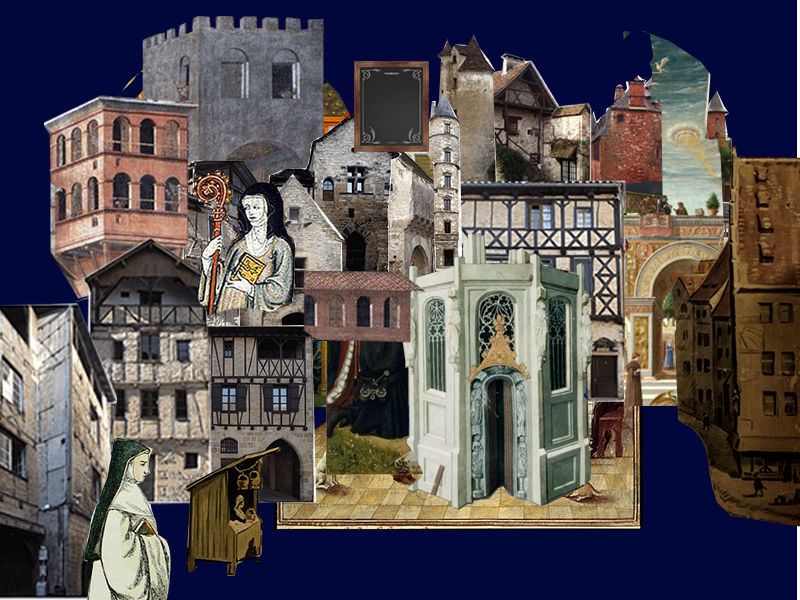
After spending a lot of time planning out images and compositions that could work with the setup we were given for display. The final clock was created. There 23 different illumination illustration that cycle(one for each hour of the day). The writing on the chalkboards is reset ever minute and the letters cycle from left to and top to bottom every second.
mokka – clock
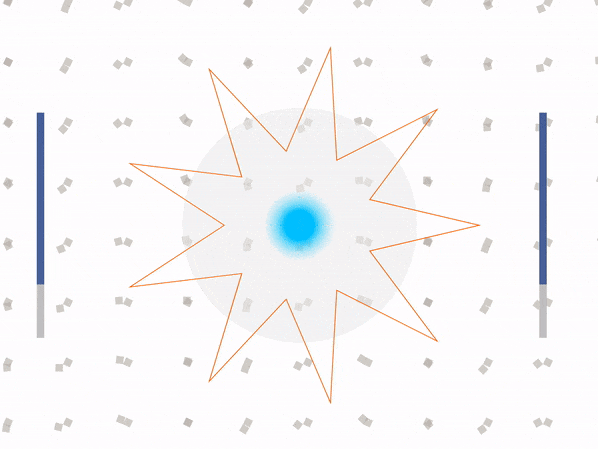
I have already said this in my “Timekeeping” post but I feel it is very relevant to what I serve here. I am sure, once the pandemic started, most of us felt that our perception of time has changed. We, as humans, have this temporal agency where we can alter our view of the structure or management of time based on our experiences, how we spend our time, or our environment.
For this assignment, I responded purely visually. There’s no story, there’s no theme. Just my raw, visual response to when I hear the words “abstract” and “clock”. Time to me is progression; an item that is constantly additive.
The hardest part for me about this project was really trying to manifest the visual I had in my head onto my sketches AND into a computational design. There are moments where I feel the transfer of information from my brain to this design has lost some of its elements, but a part of me was glad that it did miss some components or else it would have been way too complicated to look at.
Sketch:

Day:
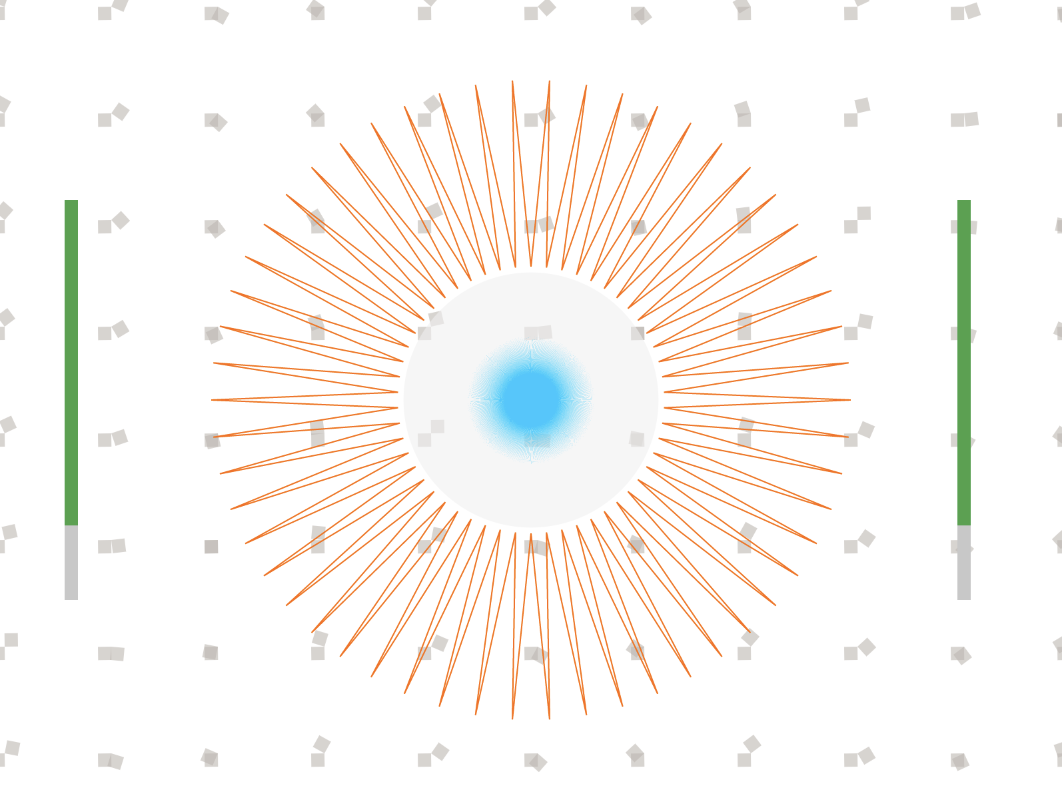
Night:
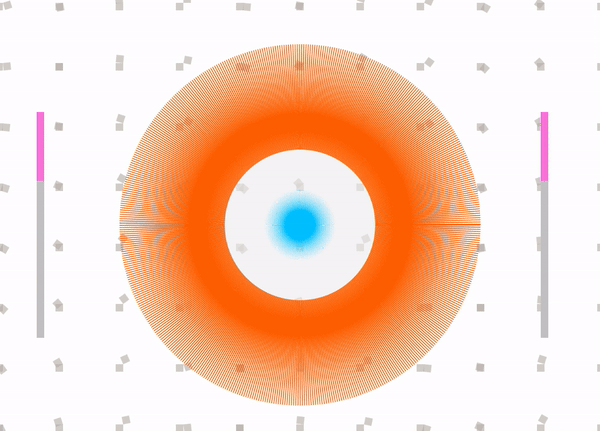

junebug-clock
Charted Territory Timekeeper
I was inspired by Dr. Donna Carroll’s lecture about the history of timekeeping, and I was so enamored with the ways of timekeeping before knowing time was a necessity. I’ve always love astrology, so I decided to base my inspiration off of charting maps and celestial time in astrology and the overlaps that are drawn between planets, moons, and stars. Included in my picture of inspirations, there were orbit maps that mimicked geometry curves. At first, I used an epitrochoid curve instead of my ellipses to demonstrate seconds, but I found it a little too busy on the canvas and I found it difficult to track with seconds. So instead, the seconds are measured with the rotating elongated ellipses (resembling orbits) as well as measured with the stars in the background (each star is added every second). Minutes are measured with the lines that resemble chart lines, but it also looks resembles our traditional clock design. The hours are measured with the circles rotating around (resembling lunar cycles), and one circle is added per hour. One detail I included was that the minute lines are spaced evenly for each “moon” to fit so it looks like the chart lines could be a measurement for the moon.

@ 9:12pm
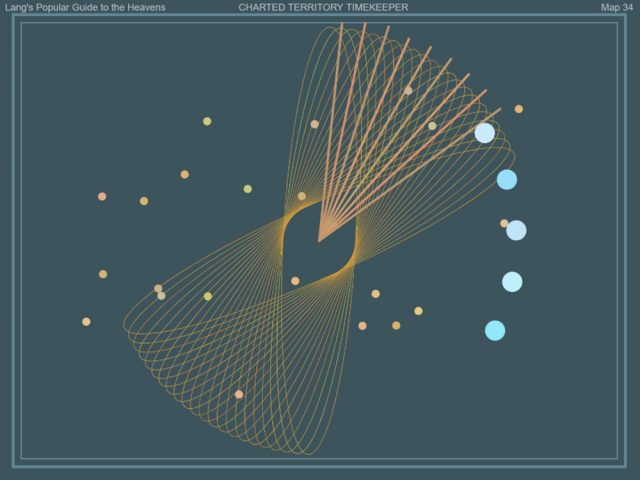
@ 5:09am

@ 11:47am
Inspiration images (left) and my sketch (right) – Click image to expand
pinkkk-clock

From the very beginning, I wanted to do something related to typography since I am a graphic/communications design major. My previous attempt involved me actually coding up complex typographic shapes, which actually not surprisingly, given my current computational skillset, I ended up with truly ugly looking type.
With Golan’s guidance, I scratched my previous exploration and started fresh. This time I learned that even simplicity is extremely hard to control well.
My final approach uses 10 letters from A to I to denote the numbers {0,1, …, 9}. One challenge Golan suggested was to limit my choice of graphic shapes that I can use to build the letters to make it interesting.

A to I + Z

@12:34
Aside from my interest in typography, I also really wanted to take this project to practice my basic drawing and animations skills. How can I construct 9 letter with only 3 rectangles?
By limiting my graphic shapes, the opportunity for smooth interpolation between the letters arose. Even though it took my forever to get to here, and I am still not satisfied with the occasional glitches, but overall, I learned a ton of basic skills through this project.


@07:45
There is definitely a lot lacking that I can keep working on and improve on, and I hope someday that I can actually design and implement my own generative / computational typography.
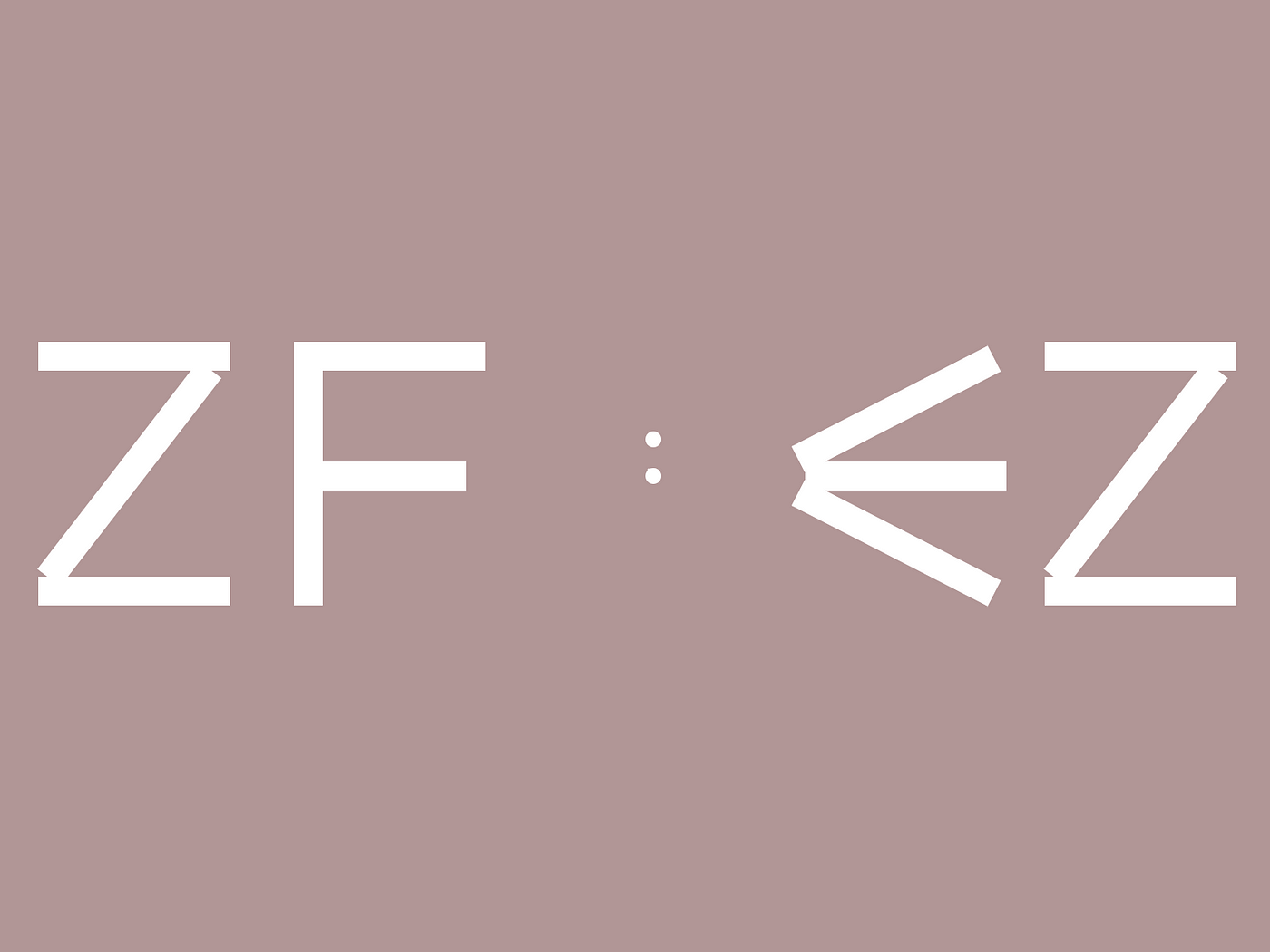
@06:50
___________________________________________
After receiving feedback, I realized that my animation is not as good as it should be, and the letters will form ACAB at 13:12 in the afternoon. So I expanded my alphabet to A to L, and now the hour can be represented by a single letter. I also added the seconds digits so it’s less boring to look at. Unfortunately, I do not have time to improve my animation before the final deadline, therefore I took out the animations.

03-Timekeeping
I was externally shocked to learn about how bad (mathematically inaccurate ) our way of measuring time is. It is clear by the presentation that time, as we recognize it, is an extremely mathematical process that started out as basic observation.
03 -Meander
I learned about planning a project, and the process of learning about the resources and skills you will need for it. I also thought the artist put a huge amount of thought and research into the concept.
